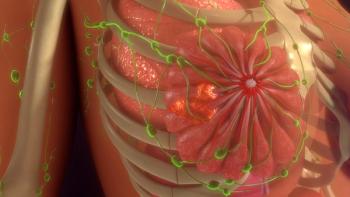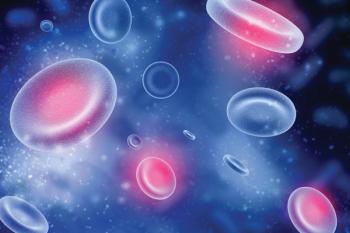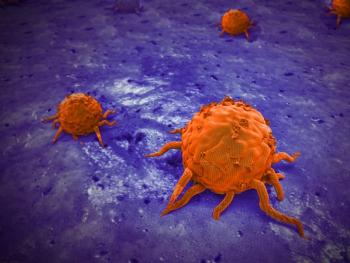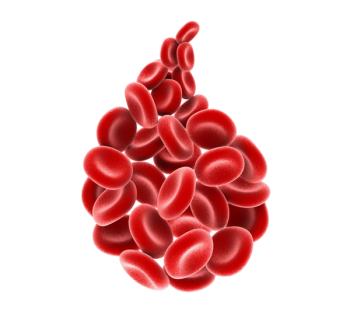
Venetoclax and Rituximab Sustains Survival Benefit After 5 Years
Treatment with the combination regimen improved progression-free survival (PFS) and overall survival (OS) over a 5-year period compared with patients treated with bendamustine and rituximab.
Treatment with venetoclax (Venclexta) and rituximab (Rituxan) demonstrated improved progression-free (PFS) and overall survival (OS) benefits over 5 years, compared with those treated with bendamustine and rituximab, in patients with relapsed or refractory chronic lymphocytic leukemia (CLL), according to a five-year analysis of the MURANO trial.
“Overall, sustained undetectable (minimal residual disease), progression-free survival and overall survival benefits provide further support for the use of a fixed duration (Venclexta with rituximab) in patients with relapsed/refractory CLL,” said Arnon P. Kater, MD, PhD, leader of tumor immunology at the Cancer Center Amsterdam, at the virtual American Society of Hematology Annual Meeting and Exposition.1
In the MURANO trial, 389 patients with relapsed/refractory CLL were randomly assigned either venetoclax with rituximab (n = 194) or bendamustine with rituximab (n = 195).
After a median follow-up of 59.2 months, the benefit observed in patients assigned venetoclax with rituximab regarding PFS was sustained compared with those assigned bendamustine with rituximab (HR = 0.19; 95% CI, 0.15-0.26). The median PFS in the venetoclax with rituximab group was 53.6 months (95% CI, 48.4-57) compared with 17 months (95% CI, 15.5-21.7) for the bendamustine with rituximab group. Of the 130 patients who completed 2 full years of therapy with venetoclax and rituximab, estimates of PFS at 36 months after treatment completion was 51.1% (95% CI, 40.2-61.9).
Compared with patients assigned bendamustine with rituximab, those assigned venetoclax with rituximab maintained an OS benefit (HR = 0.4; 95% CI, 0.26-0.62), with a five-year OS estimate of 82.1% (95% CI, 76.4-87.8) for the venetoclax with rituximab group vs. 62.2% (95% CI, 54.8-69.6) for the bendamustine with rituximab group. Median OS was not achieved in either group in this study.
Patients assigned venetoclax with rituximab who reached the end of treatment without disease progression and had undetectable minimal residual disease (n = 83) had an improved OS outcome compared with those who had minimal residual disease (n = 35). Survival estimates 3 years after end of treatment was 95.3% (95% CI, 90-100) for those with undetectable minimal residual disease (MRD) and 85% (95% CI, 72.8-97.2) for those with MRD.
In patients with undetectable MRD, 32 did not have disease progression and continued to have undetectable MRD out to 5 years. In addition, 4 patients had disease progression without prior confirmed conversion of MRD, and 47 patients had MRD conversion, with a median conversion time to MRD from the end of treatment of 19.4 months (95% CI, 8.7-28.3). Of the 47 patients who converted to MRD, 19 developed disease progression at a median time of 25.2 months (95% CI, 19.4-30.4). It is important to note that these 19 patients had more rapidly increasing rates of MRD after completing treatment compared with those with MRD but remained free from disease progression.
“The longer undetectable MRD is maintained, the likelihood of conversion to MRD positivity is diminished,” said Kater during the presentation.
Several high-risk factors were associated with an increased risk of disease progression in patients with undetectable MRD at the end of treatment including chromosome 17p deletion, genomic complexity (3 or more subtle genetic abnormalities) and unmutated immunoglobulin heavy chain variable region. Patients without these factors “were more likely to maintained undetectable MRD or experienced MRD conversion without progressive disease at this follow-up,” said Kater.
Researchers also investigated MRD growth rate in this trial in 102 patients assigned venetoclax with rituximab and 104 patients assigned bendamustine with rituximab. The venetoclax with rituximab group had a longer mean doubling time compared with the bendamustine with rituximab group (52 days vs. 72 days). Faster MRD doubling times after the end of treatment was also observed in patients with 17p deletion (44.9 days vs. 85.6 days), genetic complexity (61.6 days vs. 96.4 days) and unmutated immunoglobulin heavy chain variable region (60.2 days vs. 120.3 days) compared with those without these risk factors.
References:
1). Kater AP. Five-Year Analysis of Murano Study Demonstrates Enduring Undetectable Minimal Residual Disease (uMRD) in a Subset of Relapsed/Refractory Chronic Lymphocytic Leukemia (R/R CLL) Patients (Pts) Following Fixed-Duration Venetoclax-Rituximab (VenR) Therapy (Tx). Presented at: the 2020 ASH Annual Meeting and Exposition; December 5-8, 2020. Abstract #125.
Newsletter
Stay up to date on recent advances in the multidisciplinary approach to cancer.



















































































